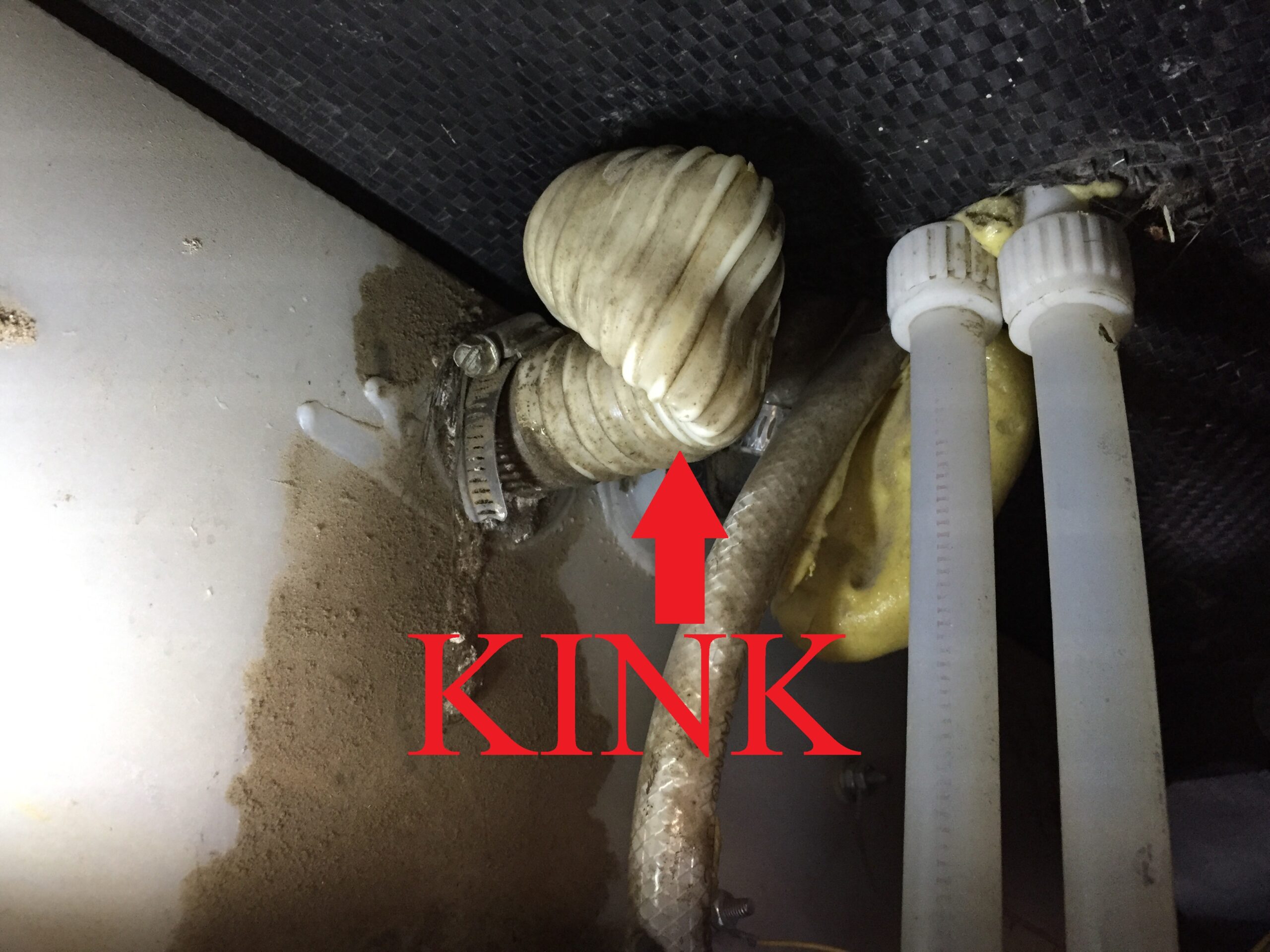
Is Your RV Water Tank In Danger Of Falling Out?
In my last two articles, I have looked at slow filling RV water tanks and ways to improve the filling process, even how to fill the tank under pressure. The inspiration for these two entries came about when my RV water tank fell out during a recent trip, exposing the hidden cause of my slow filling tank which was a kinked fill hose (pictured above).
Where is your RV fresh water tank mounted?
First, let’s review where RV manufacturers locate water tanks to see if you run the risk of someday telling the story of when your water tank fell out.
- Above-floor tanks are located within the heated living quarters of the RV and are typically under the bed or couch.
- Basement tanks are located in the storage area found in many Class A motorhomes and larger fifth wheels
- Underfloor tanks, as the name suggests, are located under the floor of the RV between the frame rails.
How often do RV water tanks fall out?
Sadly, an online search for “water tank fell out” will reveal this has become a common problem among RVers with underfloor tanks.
Ray from Love Your RV shares this on his blog, “At the other end of the rig, I noticed a bulge in the underbelly. It looked like a piece of coroplast was hanging down. I went to push it back in place, but something behind it felt solid. Part of my freshwater tank was loose and falling out!”
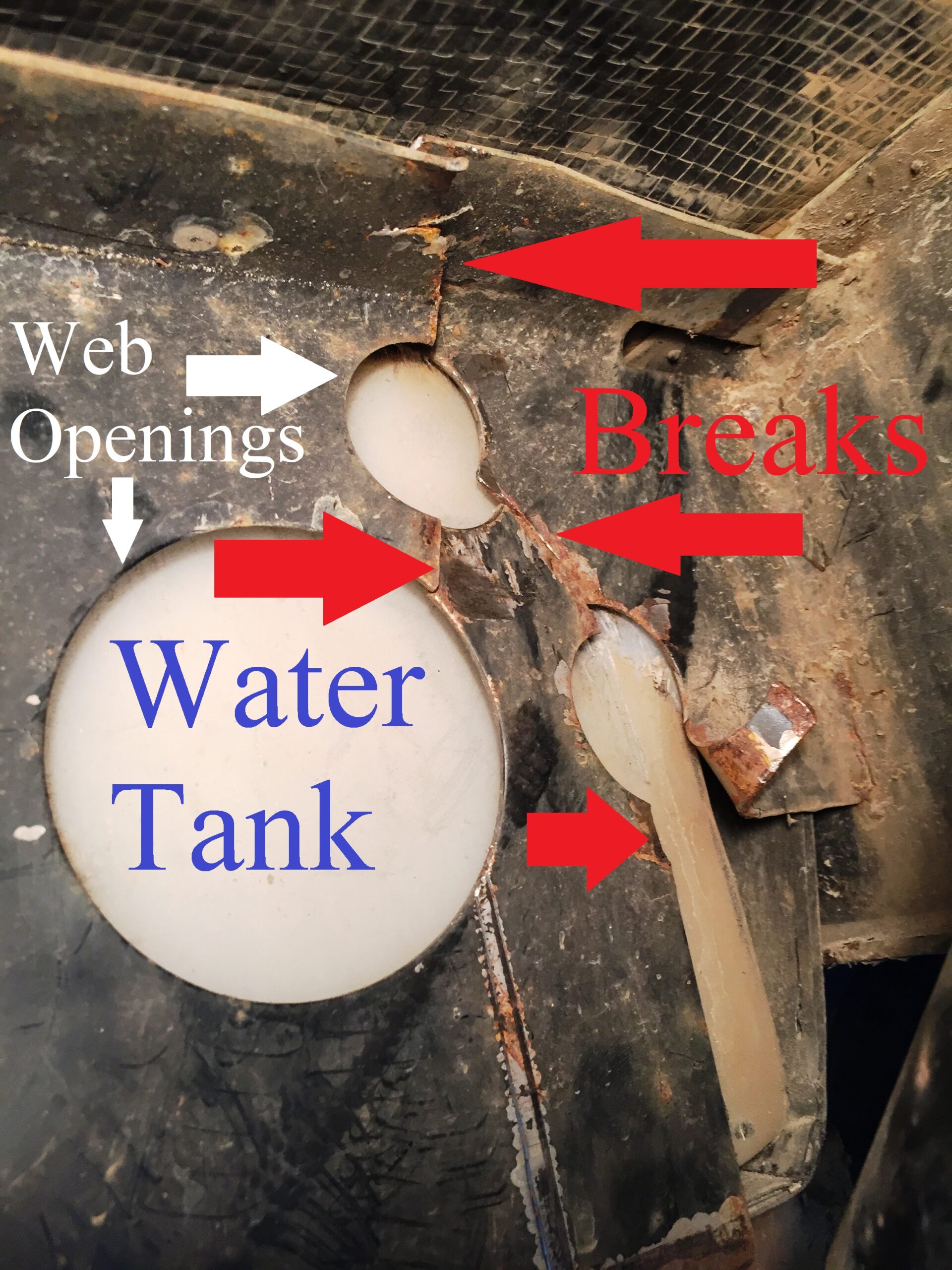
Most of the online posts illustrate the failures were due to poor design and/or inadequate material supporting the tank. Remember that a gallon of water weighs 8.33 pounds so the weight of a full tank can be extensive.
In my case, the full 60-gallon tank weighs a smidge shy of 500 pounds. That much weight sloshing and bouncing down the road in an underfloor tank is a recipe for failure if not properly supported.
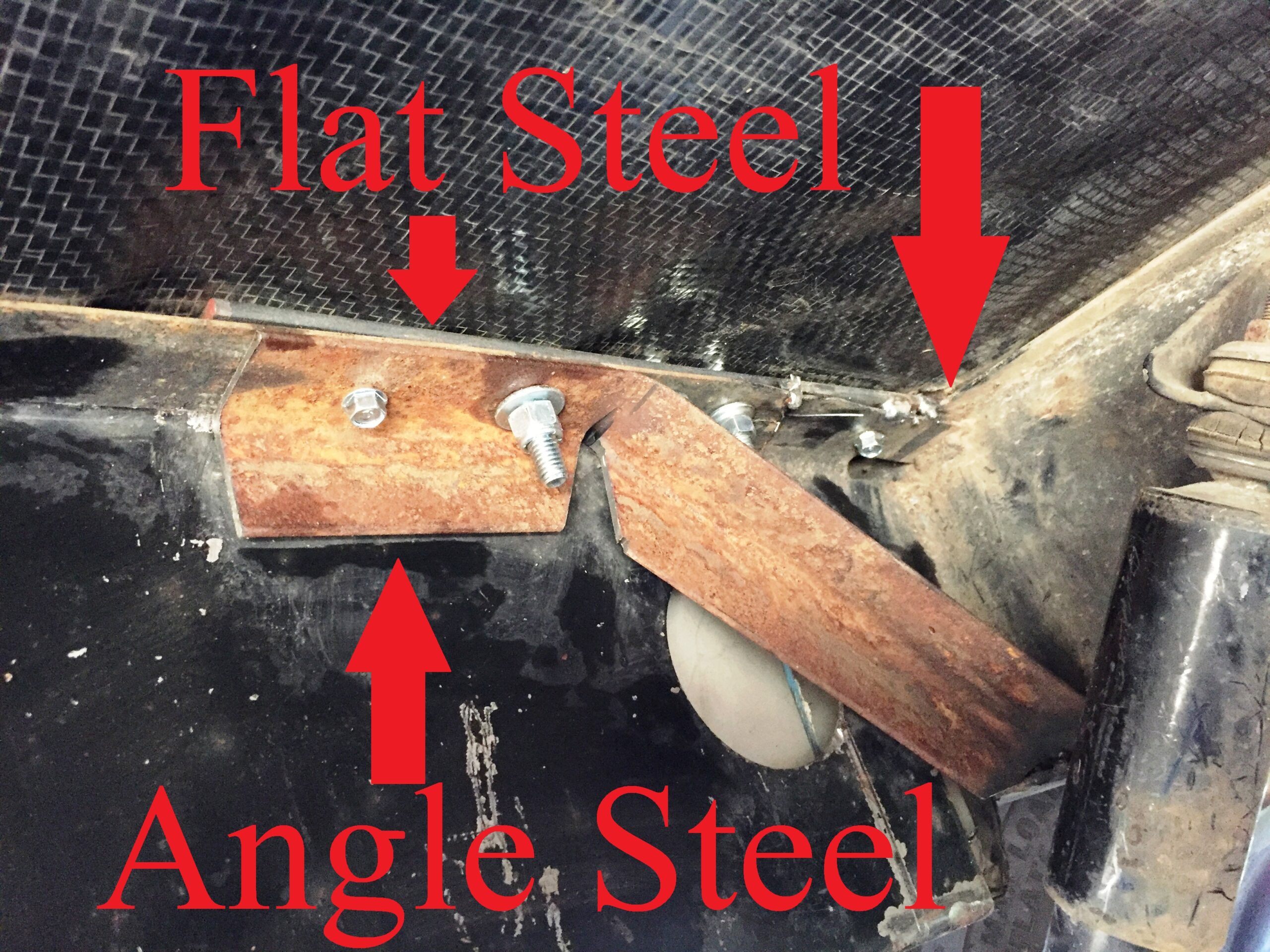
Luckily, when my water tank fell out I had just filled it in a rest area and was pulling off onto the shoulder to wait for our friends to fill theirs before proceeding.
Had the water tank fell out once we were back up to speed on the freeway, the results could have been life-threatening to others. After completely draining the tank and strapping it in place, we proceeded to the next town with a hardware store and employed a temporary fix.
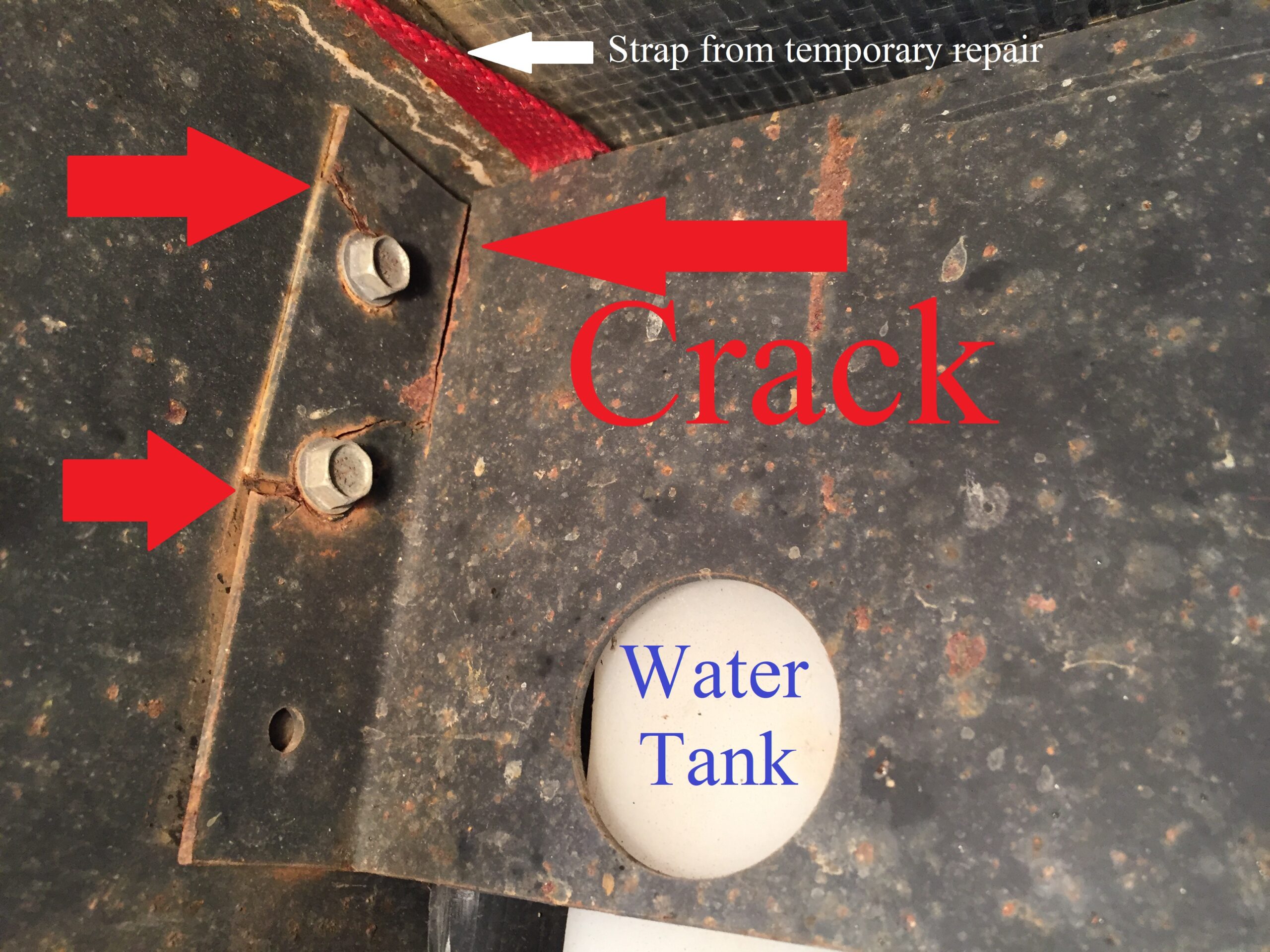
Why it failed
In my case, the water tank fell out due to the light gauge steel fatiguing between web openings. Once that failed, it put stress on the other three mounting points, detaching the welds at one location and tearing the steel around the mounting points of another.
How to repair RV water tank framework
Since the manufacturer installed the water tank in the steel framework before building the floor of the RV, I could not remove the tank to fully re-weld* or replace the steel.
The only option was to repair/reinforce the damaged area with additional steel, nuts & bolts, and a limited amount of welding. I have included a few photos of my repair for those of you that may experience the same problem.
*Caution: RV tanks are made out of plastic and will melt if you weld too close to them. In addition, the underbelly is typically protected with plastic sheeting that will melt or burn from the heat of welding. Take proper precautions if you choose to weld under your RV.
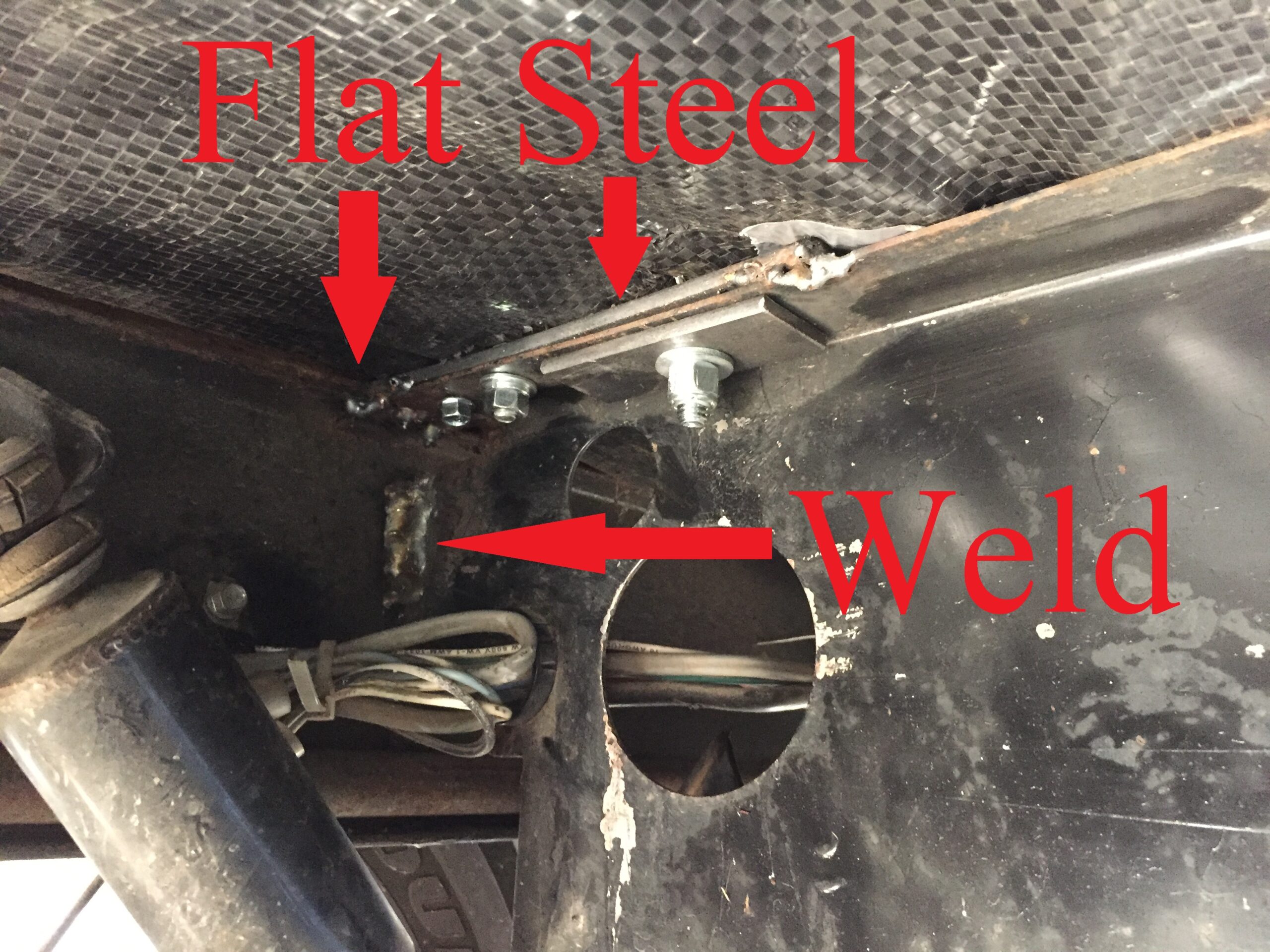
Here’s a video that might be applicable to your situation:
Learn more about RV water tank repairs
I encourage everyone with an underfloor water tank to get under your RV and inspect the framework supporting your tank to make sure this does not spoil a future outing or possibly injure someone in the process.
For more tips, check out our previous articles:



